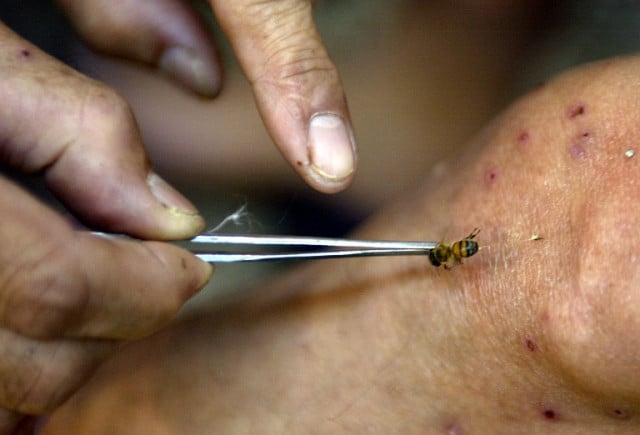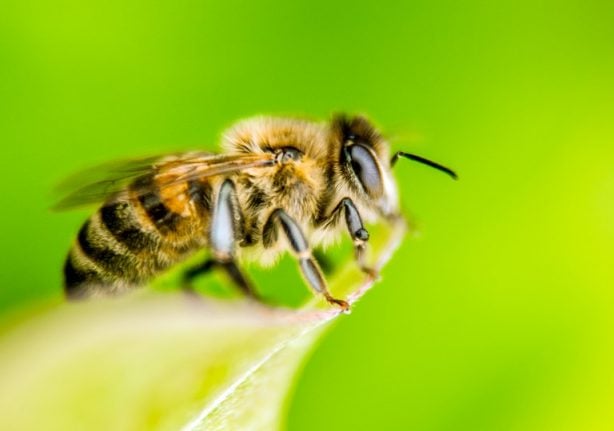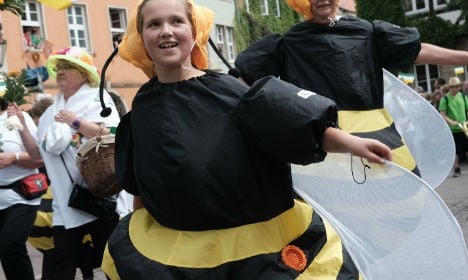The 55-year-old was undergoing a session of apitherapy – an acupuncture treatment which used the sting of live bees instead of needles – to treat stiff muscles and stress.
The woman, whose identity has not been made public, had been receiving the treatment approximately once a month for two years with no adverse effects until the last session when she experienced a severe reaction.
She “developed wheezing, dyspnea, and sudden loss of consciousness immediately after a live bee sting,” according to a report published in the Journal of Investigational Allergology and Clinical Immunology.
The woman was taken to a hospital but died “some weeks later,” the journal stated. During her allergic reaction, the woman's blood pressure had dropped to the point of causing “a massive watershed stroke and permanent coma” leading to multiple organ failure, the study said.
The report did not specify exactly where in Spain or when her treatment took place.

A practitioner carrying out beet sting treatment at a stall in Hong Kong. Photo: AFP
“To our knowledge, this is the first reported case of death by bee venom apitherapy due to complications of severe anaphylaxis in a confirmed sensitised patient who was previously tolerant,” wrote the report's co-authors, Paula Vazquez-Revuelta and Ricardo Madrigal-Burgaleta of the Ramon y Cajal University Hospital in Spain.
The report said that the “repeated exposure to the allergen was found to carry a greater risk of severe allergic reactions than in the general population.”
“Apitherapy”, also known as “bee acupuncture” involves a trained practitioner placing a bee somewhere on a patient’s body.
Then they pinch the insect’s head until the sting emerges. The creatures die shortly afterwards.
Proponents claim it is effective at treating various diseases and alleviating pain but according to the report ont he woman's death “although some benefits of apitherapy have been reported, published evidence of its effectiveness and safety is limited.”




 Please whitelist us to continue reading.
Please whitelist us to continue reading.